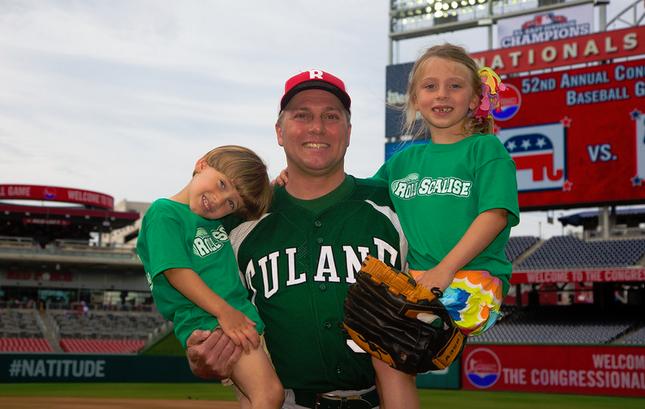Coming Together on Capitol Hill
By • June 15, 2017 0 324

Yesterday and today, June 14 and 15, all of Congress is in emotional unity after the shooting at the baseball practice of Republican representatives in Alexandria, Virginia, yesterday morning. One of the victims, critically wounded, was Louisiana Representative and Majority Whip (the third top party position) Steve Scalise. We’ve seen it before, notably after the terrorist attacks of 9/11.
We’ve heard the unifying words of congressional leaders before, too. “An attack on one of us is an attack on all of us,” House Speaker Paul Ryan (R-Wisconsin) said to a standing ovation and cheers in a full House Chamber yesterday afternoon. “We are in one House, the people’s House. We are all Americans.”
“I identify with everything Speaker Ryan just said,” Minority Leader Nancy Pelosi said, also to a standing ovation. “And just as I prayed for the safety and successful presidency of President Obama, I also pray for the safety of President Trump and his family.”
Tonight, June 15, is the ultimate annual coming together of Congress — the traditional baseball game between Democrats and Republicans, played publicly to raise money for chosen local charities. It is a good-natured event that usually brings in more than half a million dollars.
Already there’s been a lot of hugging between teams. A tweet of the Democratic players with bowed heads praying for their Republican opponents’ lives yesterday morning went viral after the shooting yesterday. In a show of public support, tickets sales to the game are booming.
The big question is, Will the new comity hold? Have the extreme partisanship, ill feelings and even violent reactions from Donald Trump’s surprise (many say shocking) election as president finally peaked? The truth is, as a headline in today’s issue of the Hill put it: “Security fears grow on both sides of aisle.”
It’s hard to say. It’s a different time than 9/11, more than 15 years ago. Partisanship is greater, but both parties are themselves split: the Republicans between Trump supporters and establishment types skeptical (or worse) about Trump; the Democrats between establishment types and left-leaning Bernie Sanders supporters. Experts blame social media — including accounts used by the press and broadcast outlets — for slicing up voters into narrow interest groups that see only their own beliefs as the truth and view other points of view with hostility.
The spark was the election. “Progressive Democrats especially were legitimately shocked around 9 p.m. on election night Nov. 8 when suddenly everything they were happy with in progressive politics and expected to grow, suddenly and completely turned the other way,” former House Speaker Newt Gingrich said on Fox News. “Their beliefs and positions have been threatened existentially.”
But now the reactions and counter reactions have gone too far. While protesting is an American tradition and a right, a turn to violence is not acceptable to anyone. “I am sickened by this despicable act,” Sen. Sanders said a few minutes after learning that the baseball shooter was a former supporter and campaign worker.
No one candidate nor the president can be blamed for violence, almost all who have pondered the last two days’ events agree. But has extremist, over-the-top rhetoric become so entrenched in our political culture that our political institutions will become increasingly dysfunctional and distrusted?
Political leaders, voters and the media now have the opening and the responsibility to discuss this crisis and what can be done among their families, between generations, among all the groups with which they are associated.
Many in Georgetown will remember when, probably not more than 10 years ago, members of Congress and their families spent weekends here and participated together in neighborhood and school events. There is a need for Congress to get to know each other outside of the political caucuses. Some have suggested that Congress not be assigned seats in party sections in the chambers but sit mixed up, as on the former “prom date nights” of previous State of the Union speeches. Another suggestion is to reopen the members’ dining rooms with improved food served 24-7 at family-style tables.
The media has some responsibilities as well. It is well known that reporters have been commanded to include a Trump factor in every story and to cover and analyze every Presidential tweet — even the provocative 3 a.m. ones. Really? Maybe editors should judge what is provocative Trump-bait and what isn’t. Do readers really require every headline have a (usually negative) Trump slant?
Finally, voters should demand that those in office and running for office should focus on the issues that every poll shows voters care about most: income inequality and job opportunities.

